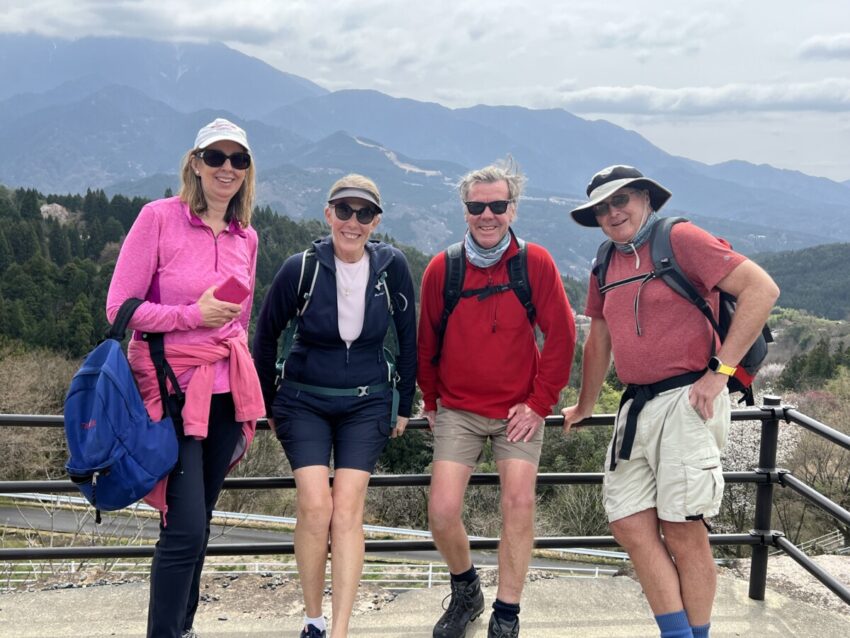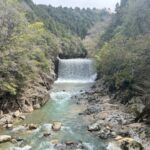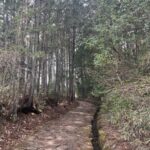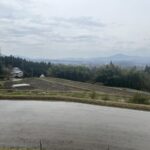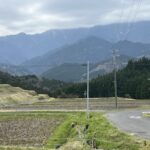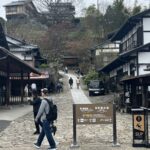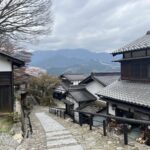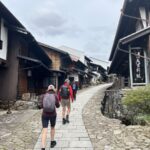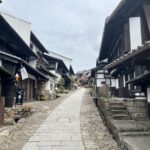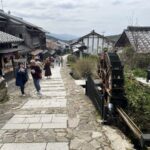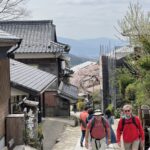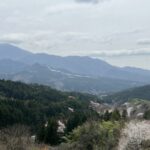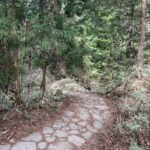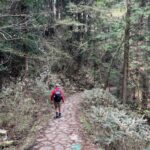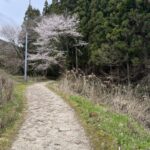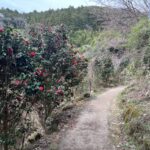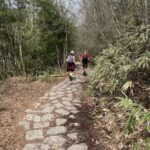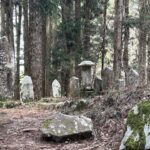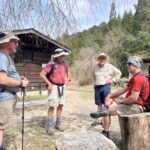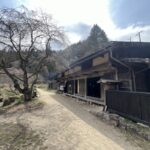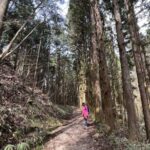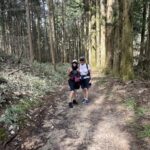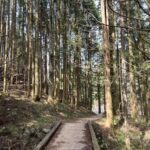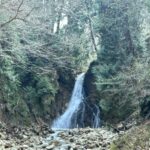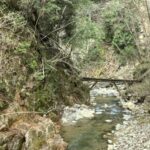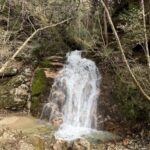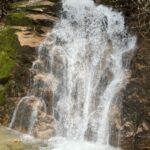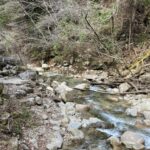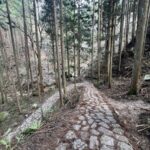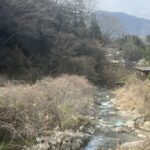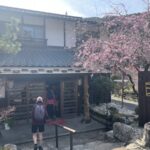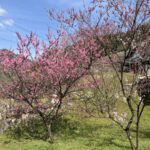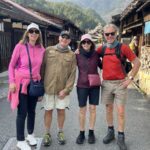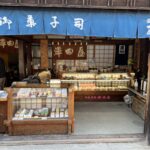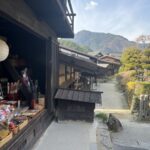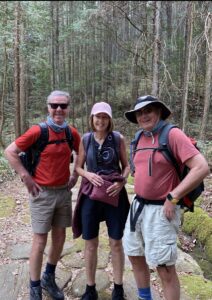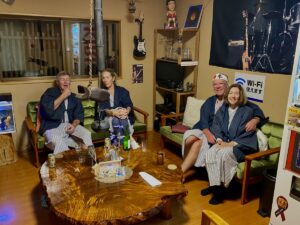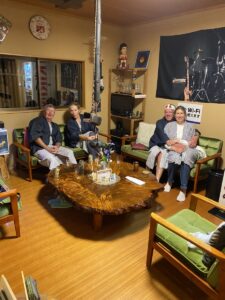After we left Nakatsugawa at the ancient Kosatsuba (official proclamation board) we came across red torii gates just after Nakatsugawa Juku. There were some steep slopes before Ochiai. We walked on an old cobblestoned way. Walking from Ochiai to Magome, we passed through Jukkyoku Toge (which means “ten curve pass”). It’s on this route that we walked up to the entrance of Magome, one of the highlights of the Nakasendo Way. Magome (Horse & Basket) is number 43 of the 69 post towns along the way to Edo (Tokyo). It truly is a reminder of how the post towns were in the Edo period (1603–1868).
The Nakasendo Way continues through the centre of Magome past the old shops and inns. It was in Magome that we found the best coffee that I’ve tasted in Japan, and in addition, they made the best choc chip cookies, which were such a treat after rice and miso for the last 5 days!! After our coffee break we climbed the trail up to the small settlement of Touge. We then walked over the Magome Pass (800m) and slowly descended through peaceful woodland. You could hear the roar of the Odaki-Medaki waterfalls, which slowly fade as you pass streams and rice paddies coming into the old (smaller) village of O-Tsumago.
Leaving O-Tsumago, the trail climbs briefly before descending into the enchanting village of the main village, Tsumago (number 42 of the 69 post towns). The street is lined with traditional Japanese wooden houses, shops and ryokan (inns). We were staying in O-Tsumago, so after visiting the small town of Tsumago we returned to our ryokan where we were staying with Tony, Lolly and Steve, and we got dressed in the traditional yukata gown for dinner. This ryokan was very basic. We had a small room and had to make our own futons up. The futons at this particular ryokan were very thin! Great experience of traditional rural Japan.
After dinner our group decided it was time for some sake and some music! A good time was had by all.

